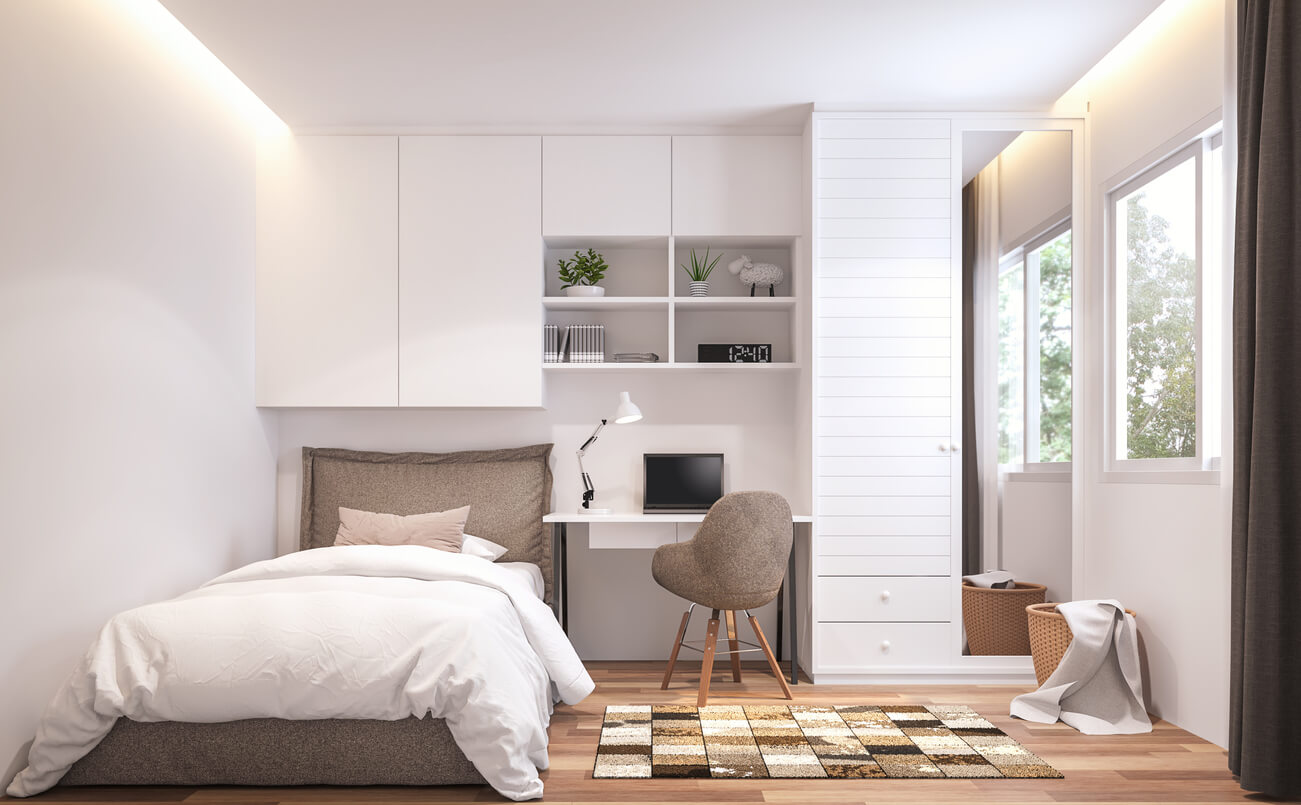Granny flats are apartments or flats that are attached to, or located on the same landed property with the main house, usually a single-family home. It is typically constructed to house genarians related to the family, hence the name.
As far as real estate investment decisions go, it's a wise choice in the long run as it potentially opens up a new income flow of rent or increases the value of a property. While granny flats have gained a certain level of prevalence across Australia, it should be noted that certain legal and logistical factors complicate the choice to build one.
These apartments come in many forms; they can be prefabricated, transportable, custom-built, and even flat-pack.
Is it possible for anyone to construct a granny flat in their home?
Whether this is possible or not is determined and regulated by specific rules and laws, which are different across states and even councils. Consequently, it's always advisable to make inquiries and do some research before undertaking such a venture.
The managing director of Avalon Granny flats, Lee Janssen, offers guidance on the subject. He says that of all questions asked by potential granny flat owners, the one that is asked most and firstly is in regards to legality; ""if they are allowed to own or build one?"". And according to him, the answer to this question is ""yes, however each council's jurisdiction on the matter differs"".
Janssen's firm builds most of its projects in New South Wales, where legislation on the matter is very generous. Over there, residents can construct and lease out granny flats like any other residential structure. However, potential owners are obligated (in reality, the contracted builders handle this) to submit a Development Application to the local council.
The process in some jurisdictions can take on a more exclusionary nature, though. Some councils decide to charge a ""contribution fee"", which can reach prices of $20,000. It is important to note, however, that this is not the norm for all councils.
Legislation on leasing and construction of granny flats differ across places. In Queensland, for instance, factors such as height/size and storey level of the flat, availability of parking spaces, and rules of who can lease the flat, differ from council to council.
In Victoria, though, a granny flat can only be leased to a dependant of the owner of the main property.
Do granny flats have to adhere to building codes?
Yes. All granny flats have to adhere strictly to the Building code of Australia and any other related ethos of construction.
In Sydney, it is typical for a granny flat with two bedrooms to rake in a weekly income of up to $720. Not a bad pull — it becomes obvious why most homeowners would want one attached to their home.
Janssen estimates that, excluding finishes, a custom-built granny flat with a bathroom and a kitchenette costs about $130,000 to construct. He cites the rising cost of housing and the sizable income prospects for the considerable increase in demand for these types of accommodation.
Ways through which income can be gained from granny flats
In some cases, they are constructed for the accommodation of older relatives. Still, they can be rented out to long-term tenants and can also be registered on online marketplaces like Airbnb as vacation rentals.
""Renovation"" of any sort are investments that boost the estimated value of a home. Granny flats are essentially upgrades to the home and would most likely add to the resale value. It becomes self-evident that adding a granny flat to a home is a net financial positive.
What to consider when building a granny flat
Houses are objects of beauty but should also be functional; this means that certain connections must be made before building a new structure. These connections include electricity, drainages and acoustics, etc. This is usually the most complicated part of the process, seeing as any conflict in the main house's design and newly constructed granny flat would cause problems.
Cost and form of granny flats
Granny flats are a big-ticket item, so buyers should carefully consider their options. There are granny flat specific companies who offer competitive prices and general builders who are also willing to take on these projects. As with any major project, you should consider getting at least three quotes before you sign with any builder, making sure to clarify exactly what is included within the costs.
Some contractors will offer what seems to be a competitive price, but the quote is lacking features such as quality finishes, flooring and appliances.
One of the big benefits of hiring a professional beyond the build is that they can interact with the local council expertly on your behalf.
Approval has to be given before construction starts, and this can take an average of six to eight months. The building time is relatively minuscule compared to this period, taking only roughly eight weeks.

